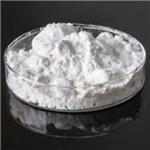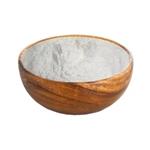Procainamide (hydrochloride) (Item No. 24359) is an analytical reference standard categorized as a local anesthetic. This product is intended for research and forensic applications.
White to slightly yellow powder
These Secondary Standards are qualified as Certified Reference Materials. These are suitable for use in several analytical applications including but not limited to pharma release testing, pharma method development for qualitative and quantitative analyses, food and beverage quality control testing, and other calibration requirements.
Procainamide hydrochloride (PAH) is suitable to investigate its binding behavior with human serum albumin and bovine serum albumin by fluorescence quenching study to understand the pharmacokinetic and pharmacodynamic mechanisms of PAH.
ChEBI: A hydrochloride which has procainamide as the amino component.
Procainamide hydrochloride,p-amino-N-[2-(diethylamino)ethyl]benzamidemonohydrochloride, procainamidium chloride (Pronestyl,Procan SR), has emerged as a major antiarrhythmic drug. Itwas developed in the course of research for compoundsstructurally similar to procaine, which had limited effectas an antiarrhythmic agent because of its central nervoussystem (CNS) side effects and short-lived action causedby rapid hydrolysis of its ester linkage by plasma esterases.Because of its amide structure, procainamide hydrochlorideis also more stable in water than is procaine. Aqueoussolutions of procainamide hydrochloride have a pH ofabout 5.5. A kinetic study of the acid-catalyzed hydrolysisof procainamide hydrochloride showed it to be unusuallystable to hydrolysis in the pH range 2 to 7, even at elevatedtemperatures.
Procainamide hydrochloride is a sodium channel blocker and Class IA anti-arrhythmic. It has also been shown to Inhibit DNA methyltransferase and modulate epigenetic regulation of gene expression.
Procainamide hydrochloride is metabolized through theaction of N-acetyltransferase. The product of enzymaticmetabolism of procainamide hydrochloride is N-acetylprocainamide(NAPA), which possesses only 25% of the activityof the parent compound.26 A study of the disposition ofprocainamide hydrochloride showed that 50% of the drugwas excreted unchanged in the urine, with 7% to 24% recoveredas NAPA.28,29 Unlike quinidine, procainamide hydrochlorideis bound only minimally to plasma proteins.Between 75% and 95% of the drug is absorbed from the gastrointestinaltract. Plasma levels appear 20 to 30 minutesafter administration and peak in about 1 hour.30Procainamide hydrochloride appears to have all of theelectrophysiological effects of quinidine. It diminishesautomaticity, decreases conduction velocity, and increasesaction potential duration and, thereby, the refractory periodof myocardial tissue. Clinicians have favored the use of procainamidehydrochloride for ventricular tachycardias andquinidine for atrial arrhythmias, even though the two drugsare effective in either type of disorder.
Veterinary Drugs and Treatments
Procainamide potentially may be useful for the treatment of ventricular
premature complexes (VPC’s), ventricular tachycardia,
or supraventricular tachycardia associated with Wolff-Parkinson-
White (WPW) syndrome with wide QRS complexes. Higher doses
may be beneficial in the treatment of supraventricular tachycardias,
although procainamide cannot be considered a first-line agent for
this dysrhythmia.



